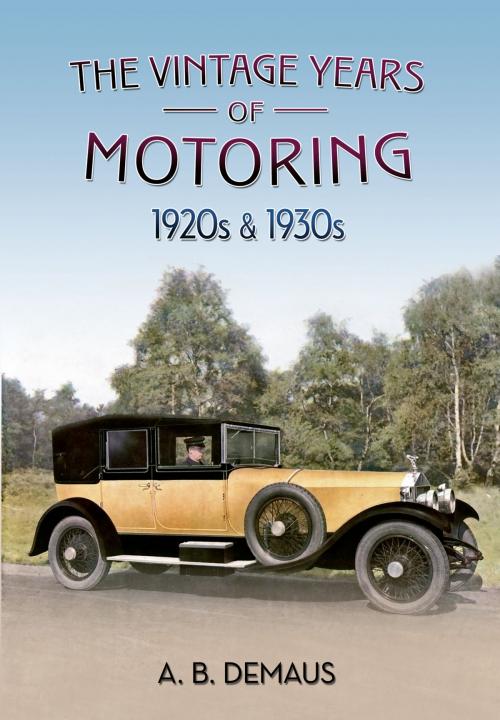The Vintage Years of Motoring
1920s & 1930s
Nonfiction, Reference & Language, Transportation, Automotive| Author: | A. B. Demaus | ISBN: | 9781445626017 |
| Publisher: | Amberley Publishing | Publication: | July 15, 2012 |
| Imprint: | Amberley Publishing | Language: | English |
| Author: | A. B. Demaus |
| ISBN: | 9781445626017 |
| Publisher: | Amberley Publishing |
| Publication: | July 15, 2012 |
| Imprint: | Amberley Publishing |
| Language: | English |
In the years immediately following the First World War, motoring and the motor car came to play an increasingly important part in everyday social life; at the same time, the automobile itself embarked upon a period of great technical improvement. The rapid and obvious changes of the preceding two decades - the formal innovations, the changes in styling - became less important. In the 1920s, one looked under the bonnet, rather than at it, for the latest developments. As the motor vehicle became a part of middle-class lifestyle, its method of use expanded, and for the most part this was welcomed. Greater reliability brought it into service for daily journeys and its use as a public transport blossomed. The newfound mobility brought forth new possibilities for excursions and motor sport flourished. In commerce and industry, its adaptations were many and mostly successful. Author A. B. Demaus has an eye for both the technical detail and the social scene, and this enlightening text for motoring enthusiasts is as attractive a guide to vintage and pre-war motoring as it was when first published in 1979.
In the years immediately following the First World War, motoring and the motor car came to play an increasingly important part in everyday social life; at the same time, the automobile itself embarked upon a period of great technical improvement. The rapid and obvious changes of the preceding two decades - the formal innovations, the changes in styling - became less important. In the 1920s, one looked under the bonnet, rather than at it, for the latest developments. As the motor vehicle became a part of middle-class lifestyle, its method of use expanded, and for the most part this was welcomed. Greater reliability brought it into service for daily journeys and its use as a public transport blossomed. The newfound mobility brought forth new possibilities for excursions and motor sport flourished. In commerce and industry, its adaptations were many and mostly successful. Author A. B. Demaus has an eye for both the technical detail and the social scene, and this enlightening text for motoring enthusiasts is as attractive a guide to vintage and pre-war motoring as it was when first published in 1979.















